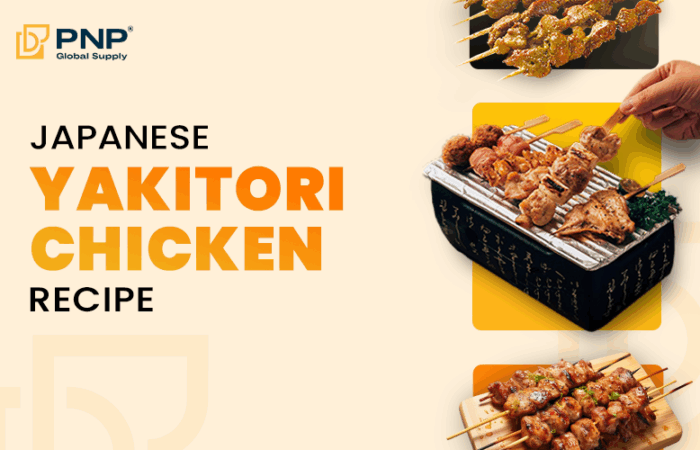Learn about what is odorless charcoal smokeless and how it’s going to change the way we think about grilling and heating. This new breed of charcoal burns cleaner than regular options, producing very minimal smoke and almost no smell at all. Great for indoors and outdoors, this improves cooking by eliminating that not-so-cute smell associated with grilling. It ensures good burning characteristics, while odorless smokeless charcoal is also eco-friendly in the grilling process, with great taste.

What is Charcoal?
Brief Overview of Charcoal:
Charcoal, which comes from incomplete burning of plant products for example timber, is a black and porous substance. Due to its high-energy content and great heat production, it is popularly used as fuel. Grilling, heating, and production processes are some of the places where charcoal is used as fuel.
Production Process:
The process in which charcoal is made is called pyrolysis. In this process, organic matter is subjected to heat without oxygen to get rid of moisture and volatile metabolites. The remaining material with high-carbon content is then cooled down and treated to yield charcoal that can be used. This procedure guarantees that charcoal continues to have its high-energy value and flame-retaining properties.

Traditional Uses:
Looking at the past, charcoal is recognized for its efficient and long-lasting burning characteristics which make it suitable for cooking and heating purposes. Moreover, it has industrial uses in metalworking or filtration. Therefore, across many industries charcoal is an important resource due to its versatility.
Problems with Traditional Charcoal:
Ordinary charcoal typically exhibits many problems like excess smoke, bad smell, and the generation of huge quantities of ash. These defects may spoil the whole experience of using charcoal, particularly in places where cleanliness and fresh air are prioritized.
Common Issues: Smoke, Odor, and Ash:
One of the main problems of traditional charcoal is that the smoke it generates can irritate and spoil both its surrounding air and the food prepared using it. The smell can also be overwhelming, whereas there is a need to constantly clean out ash that brings about other forms of disorganization. Altogether these make using normal charcoals less worthwhile than usual.
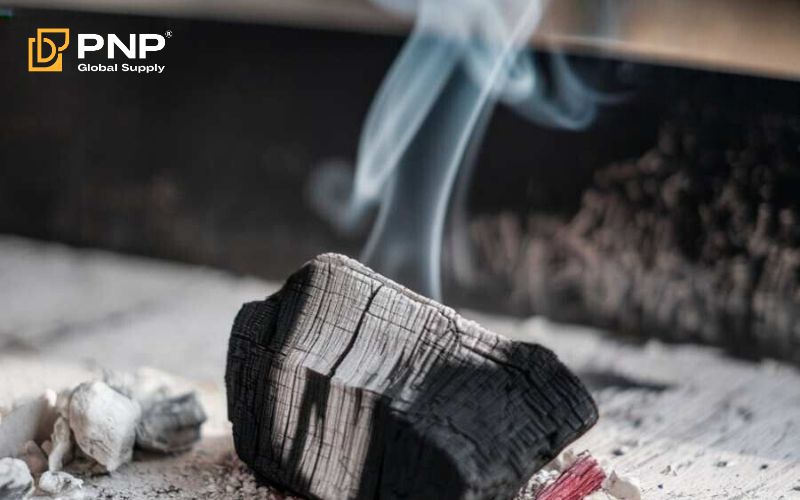
Introducing Odourless and Smokeless Charcoal:
Odourless, smokeless charcoal is a major improvement from old-school charcoals, which were associated with problems such as the production of ash and foul smell from smoke among others. By burning cleaner and better than the preceding types it hardly emits any fumes or smells at all it is an ideal choice for people who like to grill or heat their meals minus the excess faff.
Benefits and Advantages:
Some of the core features include Less noxious fumes; a longer-lasting charred material; no residual odor; and versatility in terms of uses within residences or outside spaces such as campsites etc. Also low level of soot indicates less cleaning is needed afterwards compared to regular charcoals causing messes around kitchens. In addition, this kind of charcoal enhances the overall cooking experience thus making it eco-friendly too.
How is Odorless, Smokeless Charcoal Made?
Production Process:
- Selection of Raw Material: Mainly quality hardwood or bamboo is used because they produce cleaner charcoal.
- Drying: Materials are dried properly to reduce the moisture content, hence smoke on burning is reduced to a great extent.
- Carbonization: It is a heat treatment of dried materials in the absence of oxygen under controlled conditions; the gases are removed, and the material is reduced to pure carbon.

- Cooling: The carbonized material is slowly cooled to stabilize its structure and properties.
- Crushing and Screening: The cooled charcoal is reduced to the sizes required and cleaned to eliminate any dirt or large pieces.
Unique Manufacturing Techniques:
- Controlled Atmosphere Carbonisation: Maintains precise temperature and pressure in a sealed atmosphere to assure uniform quality with the absolute minimum of smoke.
- Better Kiln Technology: New kilns or retorts are employed that raise the level of carbonization, hence reducing emissions and improving overall efficiency.
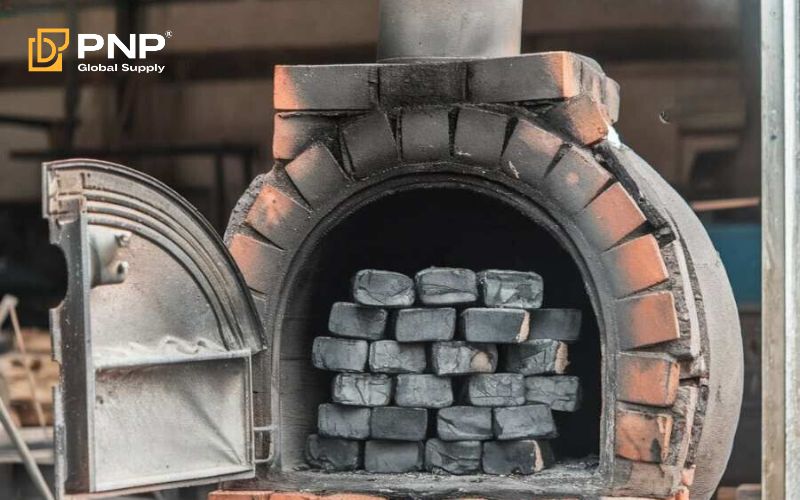
- Purification Steps: Other treatments may be carried out to decrease the residual smell and impurities.
Achieving Minimal Smoke and Odor
- High-Temperature Carbonization: Higher temperatures ensure complete carbonization and decrease volatile compounds that could be responsible for smoke and odors.
- Post-Carbonization Treatment: Charcoals may receive special chemical treatments or processes that neutralize residual odors.
- Quality Control: Careful testing and checks make sure the final product has little smoke and smell.
Main Ingredients:
- Wood/Bamboo: The main material needed; is selected because of the low moisture and the high output in terms of carbon.
- Additives: Some methods use additives, which would make burning better or lessen the leftover smell.
Carbonization Process:
- Traditional Kilns: These are natural draft kilns. They can be less efficient and make more smoke, but newer designs try to reduce this.
- Retort Systems: New retort systems provide greater control over the carbonization process and cleaner charcoal.
- Change in Methods: Techniques such as vacuum carbonization or the use of innocuous gases could be used to optimize the process to obtain better charcoal.
These steps and methods are made to ensure that the final product of charcoal will be clean, efficient, and good for use in purposes meant for minimal smoke and smell, such as grilling and other industrial purposes.
Benefits of Odorless, Smokeless Charcoal
Health Benefits
Odorless and smokeless charcoal reduces exposure to harmful compounds normally released while burning. This helps reduce respiratory issues and other discomforts typical of charcoal smoke. With toxic fumes eliminated, it creates a safer atmosphere for users.
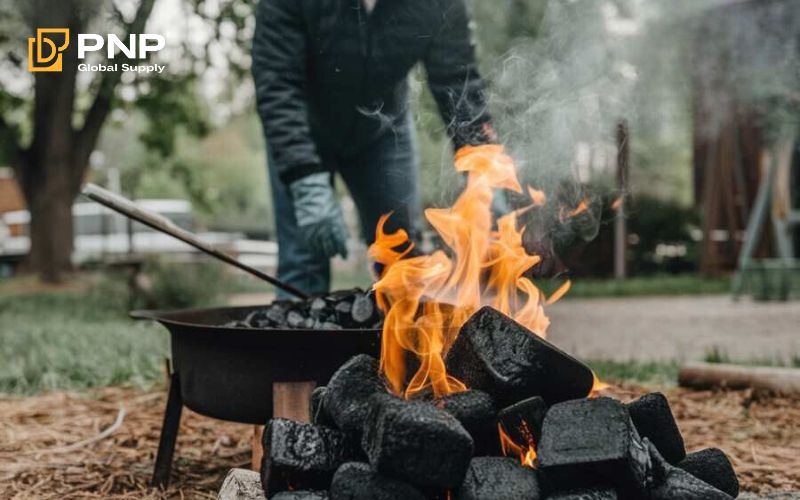
Environmental Benefits
Most of the time, producing smokeless charcoal involves advanced technologies that reduce the level of fumes and harm to the environment. With less smoke, there are fewer fine particles released into the atmosphere, making it cleaner. Besides, efficient ways of carbonization often mean better resource utilization.

Practical Benefits
Smokeless, odorless charcoal allows for a much cleaner and more pleasant experience in cooking or heating. It eliminates foul odors that can affect the flavors of food and reduces the need to frequently clean grills and cooking surfaces. With an enhanced burning performance that is consistent, efficiency and convenience are heightened.
Applications of Odorless, Smokeless Charcoal
- Indoor Grilling: Very good to cook inside without much smoke and smell.
- Outdoor Grilling and BBQ: Enhances the experience of outdoor cooking with less smoke and more flavor.
- Other Applications: Useful for camping, heating, and various industrial purposes as it burns clean.
Comparison with Traditional Charcoal
A side-by-side Comparison
| Factor | Odorless, Smokeless Charcoal | Traditional Charcoal |
| Smoke | Minimal to none | High levels of smoke |
| Odor | Low to none | Strong, persistent odor |
| Burn Time | Generally longer | Shorter burn time |
| Heat Output | Consistent and high | Variable, often lower |
| Cost | Typically higher | Generally more affordable |
Choosing the Right Odorless, Smokeless Charcoal
Factors to Consider
When going for odorless, smokeless charcoal you must evaluate heat output to guarantee regular cooking or heating as well as consider burn time that transcends; these are the two key factors for you to make the perfect choice. It is important to note that different types of charcoal have different properties, thus it should be chosen according to its purpose.
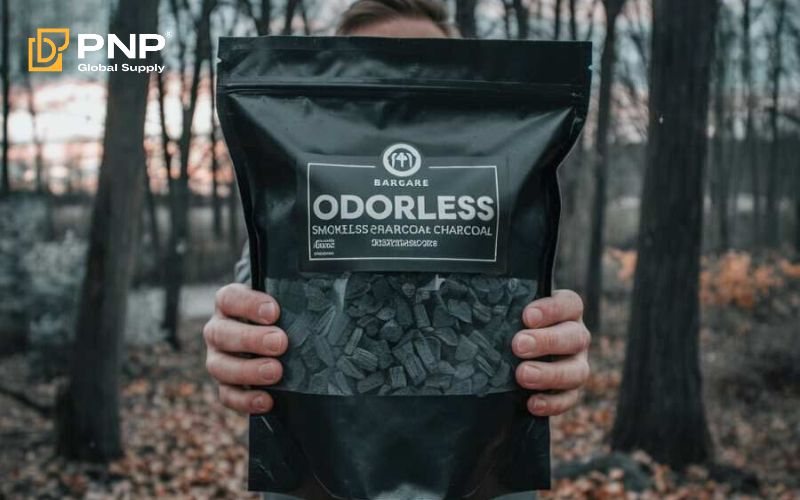
Brands and Availability:
A few well-known brands that make high-quality odorless and smokeless charcoal are PNP Charcoal and Liqui Char. These can be found in specialized shops, on the internet, or from local suppliers to ensure that what you get meets your specifications.
Conclusion
To sum up, “What is Odorless Smokeless Charcoal?” It’s a certain kind of charcoal made especially for indoor and outdoor use with little or no smell and which produces very little smoke. The production of this kind of charcoal entails an elaborate procedure that makes burning cleaner and better heating. When it comes to high-quality products, PNP charcoal has a variety of premium odorless smokeless charcoals as per the international best levels of quality. Get in touch with PNP to know more about other types of charcoal, as well as get yourself high-quality ones that improve your cooking or heating experience.



